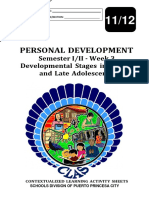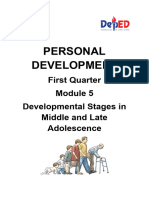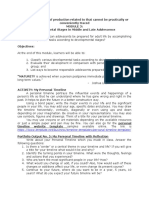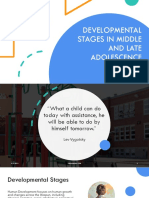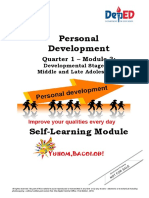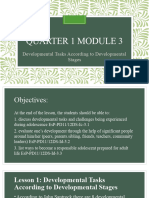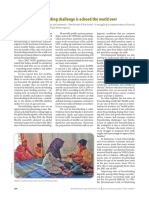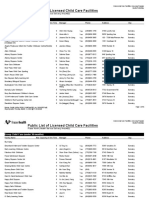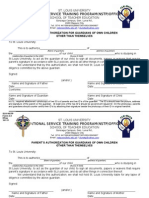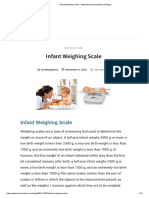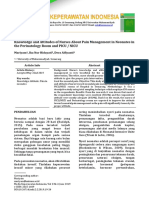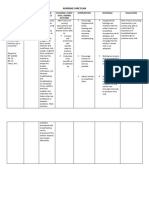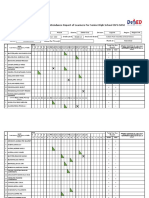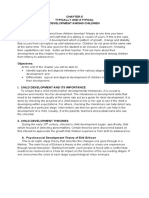0% found this document useful (0 votes)
16 views5 pagesPersonality Development Activity 3
The document outlines activities and tasks related to developmental stages in middle and late adolescence, including a timeline exercise, milestone matching, role play, and case study analysis. It also references Havighurst's developmental tasks and poses questions regarding challenges faced during late adolescence, such as psychological issues, social relationship changes, and the impact of education and cultural expectations. Participants are encouraged to engage in various activities to deepen their understanding of these developmental concepts.
Uploaded by
endikasumarago5Copyright
© © All Rights Reserved
We take content rights seriously. If you suspect this is your content, claim it here.
Available Formats
Download as DOCX, PDF, TXT or read online on Scribd
0% found this document useful (0 votes)
16 views5 pagesPersonality Development Activity 3
The document outlines activities and tasks related to developmental stages in middle and late adolescence, including a timeline exercise, milestone matching, role play, and case study analysis. It also references Havighurst's developmental tasks and poses questions regarding challenges faced during late adolescence, such as psychological issues, social relationship changes, and the impact of education and cultural expectations. Participants are encouraged to engage in various activities to deepen their understanding of these developmental concepts.
Uploaded by
endikasumarago5Copyright
© © All Rights Reserved
We take content rights seriously. If you suspect this is your content, claim it here.
Available Formats
Download as DOCX, PDF, TXT or read online on Scribd
/ 5

